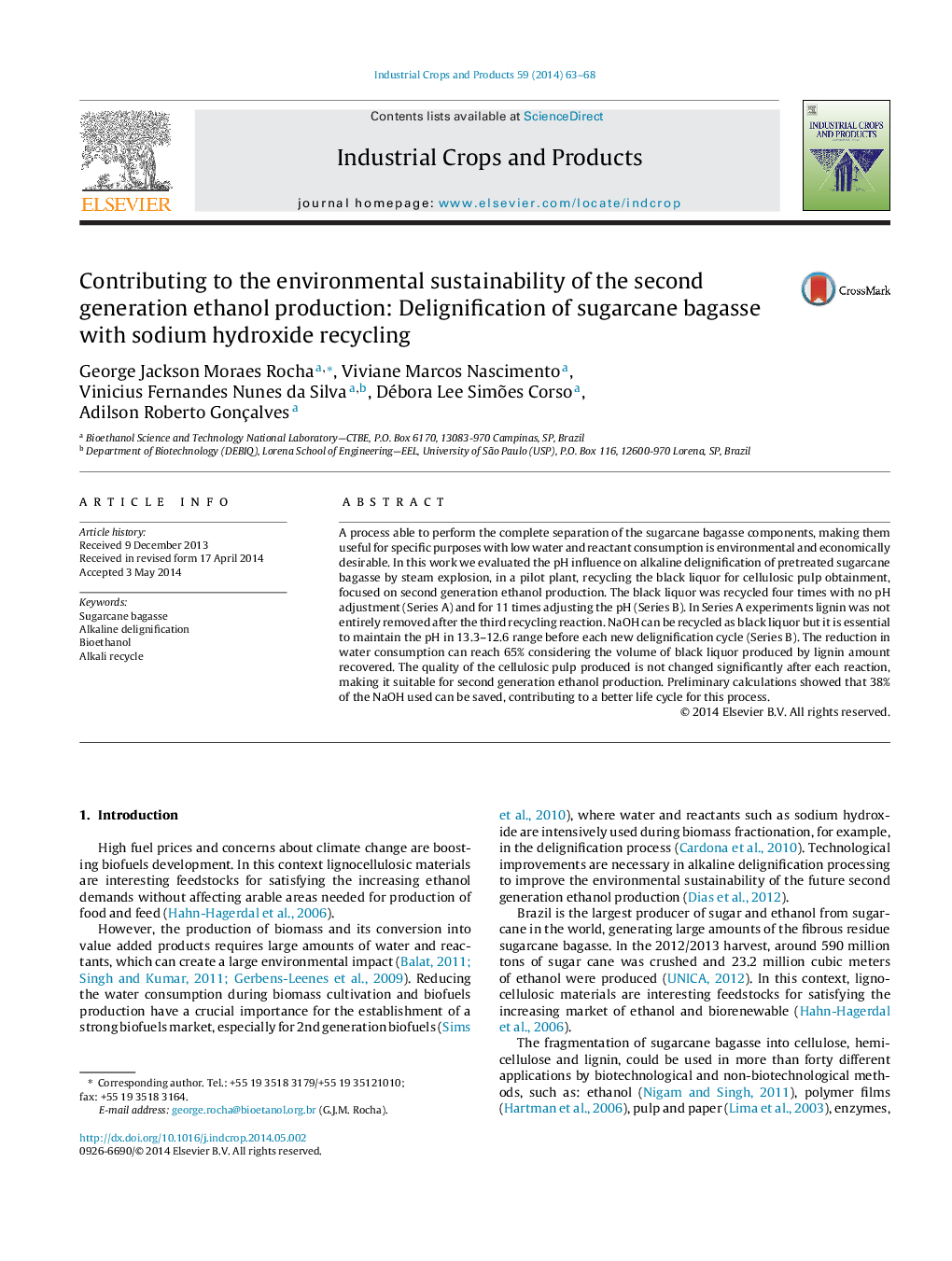| Article ID | Journal | Published Year | Pages | File Type |
|---|---|---|---|---|
| 6376654 | Industrial Crops and Products | 2014 | 6 Pages |
Abstract
A process able to perform the complete separation of the sugarcane bagasse components, making them useful for specific purposes with low water and reactant consumption is environmental and economically desirable. In this work we evaluated the pH influence on alkaline delignification of pretreated sugarcane bagasse by steam explosion, in a pilot plant, recycling the black liquor for cellulosic pulp obtainment, focused on second generation ethanol production. The black liquor was recycled four times with no pH adjustment (Series A) and for 11 times adjusting the pH (Series B). In Series A experiments lignin was not entirely removed after the third recycling reaction. NaOH can be recycled as black liquor but it is essential to maintain the pH in 13.3-12.6 range before each new delignification cycle (Series B). The reduction in water consumption can reach 65% considering the volume of black liquor produced by lignin amount recovered. The quality of the cellulosic pulp produced is not changed significantly after each reaction, making it suitable for second generation ethanol production. Preliminary calculations showed that 38% of the NaOH used can be saved, contributing to a better life cycle for this process.
Keywords
Related Topics
Life Sciences
Agricultural and Biological Sciences
Agronomy and Crop Science
Authors
George Jackson Moraes Rocha, Viviane Marcos Nascimento, Vinicius Fernandes Nunes da Silva, Débora Lee Simões Corso, Adilson Roberto Gonçalves,
